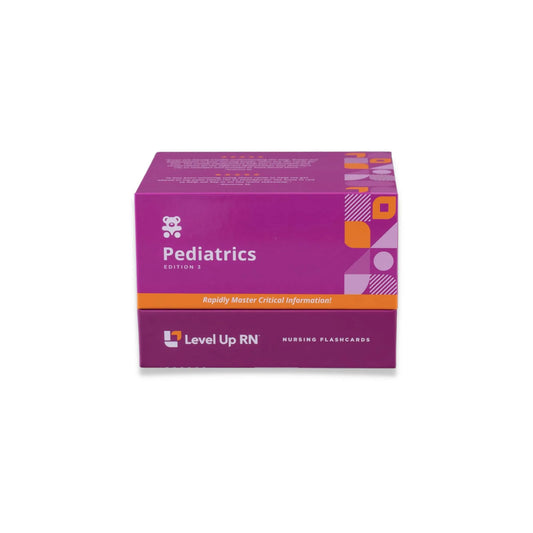Hi, I'm Cathy with Level Up RN. In this video, I will be discussing esophageal atresia as well as a tracheoesophageal fistula. And at the end of the video, I'm going to give you guys a little quiz to test your knowledge of some of the key points I'll be covering, so definitely stay tuned for that. And if you have our Level Up RN Pediatric Nursing Flashcards, go ahead and pull out your flashcards so you can follow along with me.
Esophageal atresia and tracheoesophageal fistula are birth defects that cause malformation of the esophagus and the trachea and place the baby at high risk for aspiration pneumonia and respiratory distress. With esophageal atresia, the upper part of the esophagus is not attached to the lower part of the esophagus. And then with a tracheoesophageal fistula, we have an abnormal connection between the esophagus and the trachea. So this connection should not be there. So each of these defects can occur alone, but more often than not, they occur together. And you can see from these illustrations that there are several different ways that these defects may present in an infant. And you can also see that having these defects will cause major problems for the infant. So when you feed the baby, the food is not going to make its way down into the stomach. Instead, it's going to end up in the infant's airway, which is going to cause many problems with choking and respiratory difficulties.
During pregnancy, a prenatal ultrasound may show the presence of polyhydramnios, which is where we have excess amniotic fluid because the baby can't swallow amniotic fluid due to the defect. After the baby is born, signs and symptoms of these disorders include choking, respiratory distress during feeding, cyanosis, and abdominal distention. These defects can be diagnosed with an x-ray or bronchoscopy, and treatment includes surgical repair, which typically occurs a few days after birth. Prior to surgery, maintaining a patent airway is definitely the priority. The upper esophageal pouch will need to be suctioned in order to prevent aspiration. The baby will need to be kept NPO, and IV fluids and antibiotics will be administered.
All right. It's quiz time, and I've got three questions for you.
Question number 1. What amniotic fluid imbalance is typically present when the baby has esophageal atresia?
The answer is polyhydramnios, which is where we have excess amniotic fluid.
Question number 2. What is the treatment for esophageal atresia and a tracheoesophageal fistula?
The answer is a surgical repair.
Question number 3. How do you prevent aspiration in an infant with esophageal atresia and a tracheoesophageal fistula prior to surgery?
The answer is NPO and suctioning of the upper esophageal pouch.
All right. That is it for this video. I hope you found it to be helpful. Take care, and thank you so much for watching.


